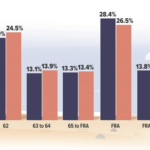Mutual funds are required by law to provide significant (or “material”) information to investors in the form of a prospectus. A prospectus is a legal document describing the history, organization, management, operations, performance, and costs of a mutual fund.
Since legal jargon can make prospectuses difficult to understand, here is a list of important points an investor should keep in mind while reading a prospectus. It is strongly recommended that potential investors read and understand the prospectus before investing.
1. The document—how to obtain one: Mutual fund companies will mail you a prospectus for free. You can also contact the fund company by phone. Moreover, most companies now provide prospectuses on their websites—look for a section titled “Fund Documents” or “Literature.”
2. Investment objective/goals: This will probably be the first section you see right after the title. It describes, in one sentence, what the fund does and what it wants to achieve. For example, “The fund seeks long-term capital appreciation,” or “The fund’s goal is to provide attractive total returns on an after-tax basis.” Understand, however, there is absolutely no guarantee that the fund will meet its objective.
3. Investment strategy: The strategy section will tell you what the fund invests in and how it invests in order to achieve its objective. Statements like: “The fund invests at least 80% of assets in equities,” “The fund invests a minimum of 50% of assets in bonds” should give you an idea of where the fund places your money. Again, keep in mind that “a minimum of 50%” can mean 50% as well as 90%.
4. Risks: All mutual funds carry a certain amount of risk and you may lose money by investing. This section will describe in detail what kind of risks the fund will expose you to: market risk, large/mid/small company risk, interest-rate risk, credit risk, derivatives risk, liquidity risk, the list is endless. In summary, be prepared for all types of risk.
5. Historical performance: Here you will usually see a chart depicting the fund’s past returns. The representation of performance in these graphs can vary greatly (monthly, annually, since inception), and it is important to know how a fund has performed in the past, but use these numbers wisely. It is even more important to remember that past performance does not guarantee future results.
6. Fees and expenses: These are what the fund charges you to manage your money. Funds may or may not have front or deferred sales charges (commonly known as loads) and redemption fees. However, most funds have operating expenses, as well as management and administrative fees. Consider that no matter if your investment grows or declines, you will still have to pay these fees.
7. Share classes: A mutual fund might offer multiple share classes: different purchase options (into the same fund) with different investment minimums and fee structures. Common types of share classes can be designated by letters (A, B, C), or classified as R (Retail) or I (Institutional). The share class you choose to invest in will determine what fees you will pay.
In addition, the prospectus will tell you the name of the fund manager(s)—they are the ones who make all the important decisions about when and how to invest the fund’s assets. Some funds have a minimum investment requirement ($5,000, $10,000, and so on), which is something you also have to take into consideration. Other important details include how to open an account with the fund, how to buy and sell shares and how to contact someone for help, if needed.
The investment return and principal value of mutual funds will fluctuate and shares, when sold, may be worth more or less than their original cost. Investing in any mutual fund always involves risk of loss.









